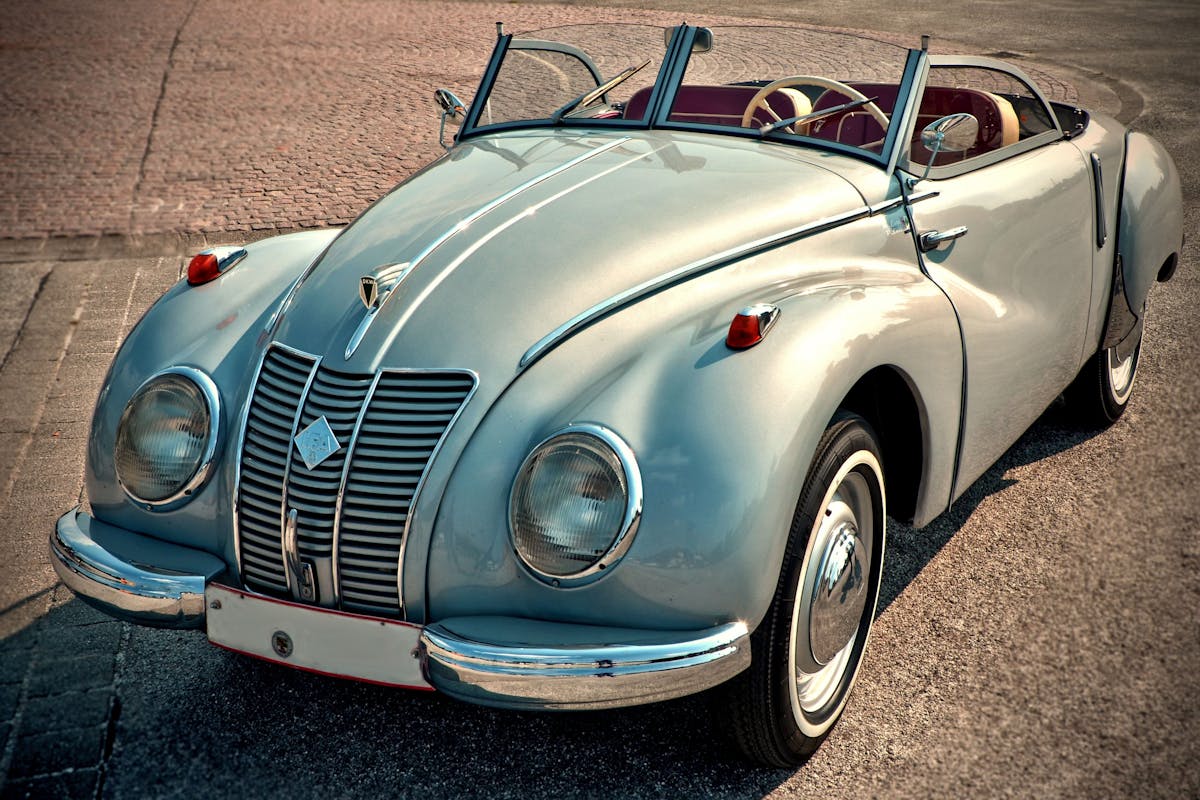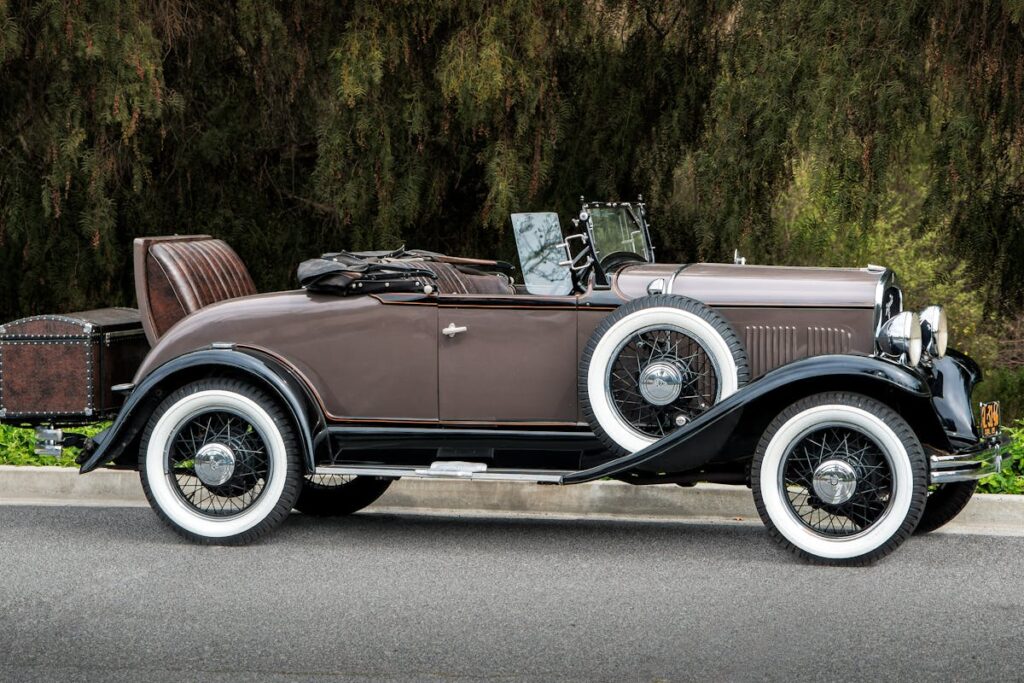As classic car enthusiasts or owners, determining the true value of an old automobile can often be a challenging task. The question arises: should your classic car be considered a valuable antique or is it merely scrap metal? The answer lies in a careful evaluation of aspects such as the vehicle’s overall condition, its rarity, and the current market demand. If restoration costs seem to eclipse potential value, the scrapyard might seem like the inevitable end. However, could a professional appraisal possibly reveal an unexpected worth? The exploration ahead promises insightful revelations.
Understanding Classic Car Valuation
Diving into the world of classic cars, one must first grasp the valuation process. This is no pedestrian task, rather it is an intricate exercise that calls for a deep understanding of classic car history and a keen awareness of collector interest.
Classic car history plays a pivotal role in the valuation process. Cars that have revolutionized the auto industry, or have a renowned lineage, like the 1964 Aston Martin DB5, often carry a hefty price tag. The model’s historic significance, its rarity, and its cultural impact can all contribute to its value.
Collector interest, on the other hand, can fluctuate over time. Certain models become more desirable due to market trends or shifts in collector preferences. For instance, the surge in interest for 1960s and 1970s muscle cars has seen their prices escalate in recent years.
Evaluating the Car’s Condition
A critical facet of valuing a classic car is to thoroughly evaluate its condition. This includes the assessment of structural damage, which may considerably lower the car’s worth, as well as the determination of mechanical functionality. A thorough inspection of these aspects will provide a more accurate and objective estimate of the car’s value.
Assessing Structural Damage
Despite its often overlooked importance, evaluating structural damage is an essential step when determining a classic car’s condition. The primary focus should be on frame integrity and rust evaluation, which serve as key indicators of the vehicle’s overall structural integrity. A structurally sound frame is critical for the car’s safety and performance, while rust can quickly compromise these factors if left untreated.
A car’s collision history is another important factor to contemplate. Past accidents can cause hidden damage that may affect structural integrity and safety, and a thorough inspection can reveal these issues. The repair costs associated with rectifying such damage should be carefully weighed against the car’s restoration potential.
Additionally, safety concerns should never be ignored. Structural damage can greatly impact the car’s safety, particularly in the event of a collision. Thus, even if the car has a high restoration potential, if the repair feasibility is low due to extensive structural damage, it may be best to explore other options. Ultimately, evaluating structural damage is not just about determining value, but it’s also about ensuring the classic car can be safely enjoyed for years to come.
Determining Mechanical Functionality
Understanding the mechanical functionality of a classic car is a crucial aspect of gauging its condition. The engine performance, for instance, is a key determinant of a car’s functionality. A well-functioning engine should start smoothly, idle evenly and accelerate without hesitation. Any unusual sounds, like knocking or pinging, could indicate problems that need to be addressed. Also, the car’s exhaust should be clear and free of excessive smoke, which might suggest engine issues.
Another critical factor to evaluate is the transmission, which should shift effortlessly without any grinding or jerking. The steering and brakes should also respond adequately, providing safe and reliable control of the vehicle.
Furthermore, the maintenance history of the classic car can shed light on its mechanical functionality. Regular maintenance practices, such as oil changes, tune-ups, and timely replacement of worn-out parts, are indicative of a car that has been well cared for. However, a lack of maintenance records might not necessarily mean poor care as some owners might opt to perform the work themselves.
Considering Rarity and Desirability
When evaluating classic car value, two essential factors come into play: rarity and desirability. Rarity refers to how many of a particular model was produced and how many still exist today. For instance, a 1962 Ferrari 250 GTO, of which only 39 were made, is exceedingly rare and consequently incredibly valuable. Conversely, a mass-produced model, even from the same era, may not hold the same value due to its abundance.
Desirability, on the other hand, is influenced by market demand and collector interest. It concerns the appeal of a particular model to enthusiasts and collectors. Some models may not be particularly rare but are highly sought after due to their iconic design, performance, or historical significance. For example, the 1965 Ford Mustang may not be rare, but it’s a desirable classic due to its significant impact on the automotive industry.
Evaluating rarity and desirability requires extensive knowledge and research. It involves analyzing production numbers, survival rates, and market trends; understanding the historical and cultural significance of a model; and gauging current collector interest. This intricate process can help determine whether a classic car is a valuable asset or better suited for the scrapyard.

The Role of Originality
Building on the factors of rarity and desirability is the vital aspect of originality in determining a classic car’s value. Original parts, for instance, can greatly enhance a vehicle’s originality value. The presence of these components affirms the car’s historical importance, providing a tangible link to its manufacturing era.
However, the restoration impact can also affect a vehicle’s worth. While expert restoration can help salvage deteriorated components, over-restoration or the use of non-original parts may detract from the car’s authenticity significance, consequently potentially lowering its value.
Aftermarket modifications, though sometimes appealing for their novelty, can considerably diminish a classic car’s originality. Collector preferences often lean towards preserved authenticity, as this is seen as a proof of the car’s historical narrative. As a result, preservation ethics, which prioritize maintaining the vehicle’s original state, are essential in the classic car domain.
Market Trends and Car Values
Understanding current market trends is essential to accurately determining the value of a classic car. Various factors, including model, condition, rarity, and provenance, markedly affect this value. In the following sections, we will examine these elements in detail, providing an extensive guide to evaluating the worth of your investment.
Analyzing Current Market Trends
A careful examination of current market trends is essential in determining the value of classic cars. The market for these vehicles is often influenced by a variety of factors, including the state of the economy, consumer demand, and the rarity of the vehicle in question.
Classic car auctions, for instance, are a prime source of data that can reflect these trends. High-end auctions can provide insight into what buyers are currently willing to pay for certain makes and models. Conversely, a lack of interest or low final bid prices can indicate a decrease in value or demand for particular vehicles.
Another key factor in evaluating market trends is collector car insurance values. These policies are often based on an agreed value of the vehicle at the time of policy inception, providing a solid baseline for the car’s worth. An increase in insurance values can indicate a rise in market value, while a decrease may suggest the opposite.
It’s also important to observe the broader economic landscape. A robust economy can spur higher spending on luxury items like classic cars, while an economic downturn can depress the market. This economic context plays a significant role in shaping current market trends for classic cars.
Determining Your Car’s Value
Evaluating the value of your classic car necessitates a thorough grasp of market trends and how they impact car values. Understanding these dynamics is essential to accurately gauge your car’s worth. The classic car market is driven by a confluence of factors, with historical significance and ownership history playing vital roles.
Historical significance often equates to higher value. A car model that marked a turning point in automotive design or technology, or one that has a rich racing pedigree, is typically more desirable to collectors. Such cars are seen as tangible pieces of automotive history, and their prices often reflect their iconic status.
Ownership history is another key factor. A classic car with a well-documented history of careful maintenance and preservation will command a higher price than a similar model with an unknown or checkered past. Provenance can also add value; a car owned by a celebrity or used in a famous film, for instance, can fetch a premium.
In the end, determining your car’s value is more art than science, a complex calculation that involves evaluating its condition, rarity, and history, and then comparing it to current market trends. It’s a task that requires diligence, patience, and a deep understanding of the classic car market.
Factors Affecting Car Value
In the domain of classic cars, market trends play an influential role in determining vehicle values. The popularity of a specific model or brand, scarcity, and the car’s historical significance can influence demand and, consequently, the value. These trends are not static and can shift based on cultural influences or economic conditions, making it crucial for owners to stay informed.
Restoration costs are another critical factor affecting a classic car’s value. A well-restored vehicle will likely fetch a higher price than one in need of extensive work. However, the cost of restoration can be substantial, and it’s not always guaranteed to increase the vehicle’s value proportionately. It’s important to balance the potential increase in value against the cost and effort of restoration.
Insurance implications should also be considered. Insuring classic cars can be more expensive due to their potential for higher repair costs and increased risk of theft. Insurers may require an independent appraisal to determine the car’s value, which can impact the cost of coverage. In some cases, the insurance cost may make owning a classic car less viable, thereby affecting its market value.
Getting a Professional Appraisal
Maneuvering the world of classic car appraisal requires a certain level of expertise and understanding. It’s a specialized field involving intricate knowledge of automobiles, their history, and the market’s current trends. The appraisal process is a vital part of determining your classic car’s value accurately.
Professional valuators are experts in this field. They have the knowledge and experience to accurately assess your vehicle’s worth. They will evaluate the car’s condition, originality, rarity, and the quality of any restoration work. These factors have a significant impact on a classic car’s value.
Professional appraisers also take into account the current market trends. They do thorough market research to determine how much similar vehicles are selling for. This information is invaluable in ensuring that your car’s value is not just fair, but also accurate and current.
Additionally, a professional appraisal will provide you with a detailed report. This document can be essential for insurance purposes, resale, or simply for your personal records.
When to Consider the Scrapyard
Sometimes, despite the sentimental value or historical significance that a classic car may hold, it might be time to face the music and consider the scrapyard. The harsh reality is that not all classic cars will increase in value or even hold their current worth. It’s crucial to assess your vehicle objectively, considering its condition, market value, and potential buyer interest.
Here are four key indicators that it may be time to explore scrapyard options:
- Excessive Restoration Costs: If the cost of restoration exceeds the vehicle’s potential value, it might be time to salvage what you can and let the rest go.
- Lack of Market Demand: Even a well-restored classic car might not fetch a good price if there’s no demand in the market.
- Structural Damage: Significant structural damage can render a car unsafe to drive, and the cost of repair might outweigh the vehicle’s potential value.
- Obsolete Parts: If parts for your classic car are no longer available or prohibitively expensive, maintaining the vehicle can become a costly endeavor.
With these factors in mind, understanding your car’s salvage potential is paramount before making any final decisions.
Making the Final Decision
While it can be challenging to part with a beloved classic car, making a well-informed final decision is vital. This decision often hinges on two primary factors: restoration costs and emotional attachment.
Restoration costs can be a deciding factor in determining whether to keep or dispose of a classic car. If these costs greatly outweigh the potential value of the vehicle, it may be more practical to contemplate the scrapyard. It’s important to get a thorough assessment of the potential restoration costs from a professional to guarantee you have accurate figures.
On the other hand, emotional attachment can cloud objective decision-making. Your classic car may hold sentimental value or important memories. However, it’s necessary to balance this against the practical aspects. Will the car provide value, or will it become a financial burden?
Also, reflect on the market value. If your car is a rare model or in demand, it could fetch a high price even in its current condition.
Frequently Asked Questions
What Are Some Reliable Insurance Options for Classic Cars?
Reliable insurance options for classic cars include providers such as Hagerty, Grundy, and American Collectors. They offer extensive classic car insurance and vintage vehicle coverage tailored to the unique needs of classic car owners.
How Can I Find Classic Car Enthusiast Groups or Clubs in My Area?
Locating classic car enthusiast groups in your area can be achieved through local meetups, car shows, and online forums. Websites like Meetup.com and online car club directories are excellent resources to connect with fellow enthusiasts.
Can Classic Car Parts Be Sourced Easily for Repair and Maintenance?
Sourcing parts for classic car repair and maintenance can present restoration challenges due to limited parts availability. However, numerous specialized vendors and online platforms cater specifically to the classic car market, easing this process considerably.
What Are the Legal Requirements for Owning and Driving a Classic Car?
Legal requirements for owning and driving a classic car involve meeting specific registration requirements and compliance with driving regulations. These may include roadworthiness checks, special number plates, and adherence to certain usage restrictions.
Are There Tax Advantages or Incentives for Owning a Classic Car?
Yes, tax advantages exist for classic car owners. Potential tax deductions may be obtained from car-related expenses. Additionally, the appreciation of a classic car’s value can offer significant financial benefits over time.

